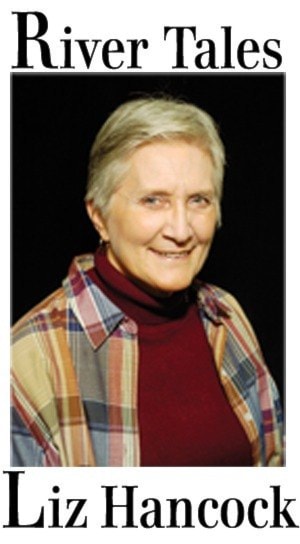Dotted along the banks of the waterways, tucked amongst the clumps of sparse growth, there is plenty of evidence of beavers.
Two-foot high stumps with sharp chewed wood stick up like broken teeth and scattered around are crushed branches and leaves.
The lodges and dams they make create ponds or block streams.
Despite what looks like damage, the beaver plays a necessary part in keeping the rivers well.
This furry mammal is the largest rodent in North America. It is adapt at swimming underwater, using its broad flat tail as a rudder and feeding on aquatic plants, grasses and wood, which it stores along the river bank for winter food.
Beavers have to chew all the time to grind down their teeth or their incisors grow constantly and will become so long they cannot eat at all and starve.
Between the years 1776 and 1830, the beaver was hunted almost to extinction, with the Russians, Europeans and Hudson Bay Company fighting for supremacy.
The pelts were used to make gentleman’s hats. A large beaver would make 18 of them.
Luckily for the beaver, the fashion changed.
But it was not until the 1930s, when Gray Owl (Archie Belaney), the English naturalist, began conservation work with the beaver, that the animal started its long road to recovery.
In 2009, Britain started an experimental reintroduction of the beaver into a quiet Scottish glen. The last beaver in that country was hunted and killed in the late 1880s, and there is much opposition to their return by farmers and foresters. But if successful, they will be used to manage marshlands and waterways.
Beavers are considered a keystone animal in the river system as they help keep the rivers from silting up, and create wetlands for other species and birds, thin out smaller trees, and clean up the river bank of tangled plants. The building of a beaver dam can also reduce the level of a river, helping in flood management.
When walking the riverbank, look for the telltale webbed back foot print in the mud and you might be lucky to see one of these shy creatures paddling by.
Liz Hancock is a
member of ARMS.
